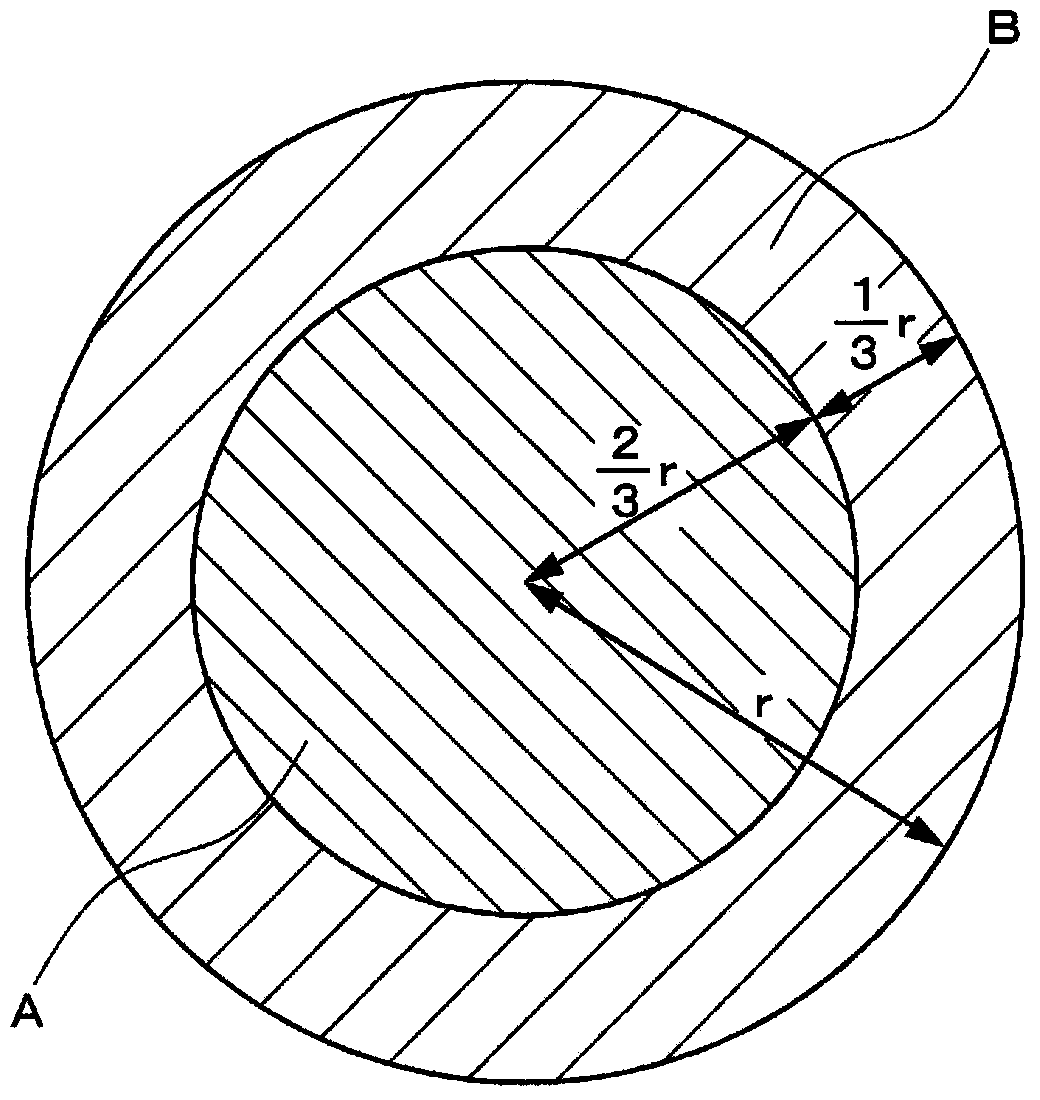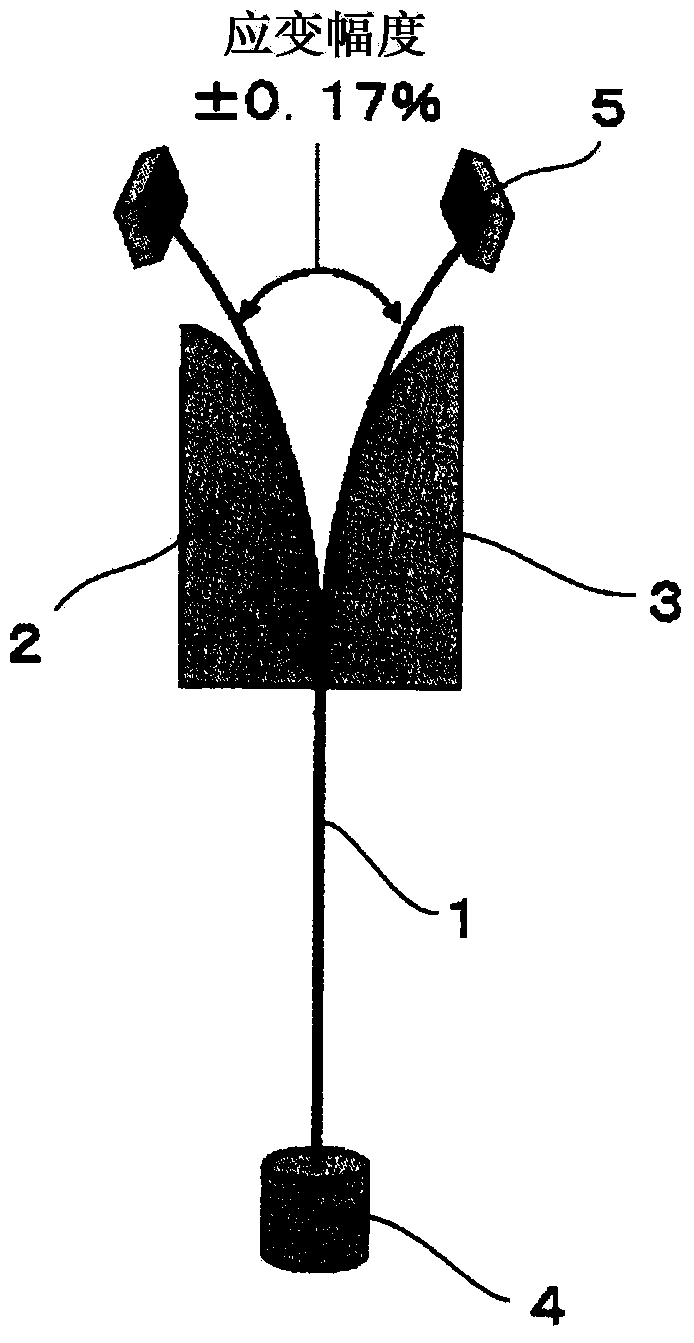Aluminum alloy conductor
An aluminum alloy conductor and conductor technology, applied in the direction of metal/alloy conductors, conductors, insulated conductors, etc., can solve the problems of high yield strength, poor handleability, and different crystal orientation formation methods, and achieve excellent handleability and conductivity. , Excellent flexural fatigue resistance
- Summary
- Abstract
- Description
- Claims
- Application Information
AI Technical Summary
Problems solved by technology
Method used
Image
Examples
Embodiment 1 and 2、 comparative example 1
[0087] Examples 1 and 2, Comparative Example 1, Conventional Example 1
[0088] In such a manner that Fe, Mg, Si, Cu, and Al were in the amounts (% by mass) shown in Table 1, the molten metal was continuously cast using a Propez type continuous casting calender while using a water-cooled mold. calendered to obtain approx. of bars. The casting cooling rate at this time is 1°C / sec to 20°C / sec.
[0089] Next, peel the surface so that it is approximately It is wire-drawn until it is And the softening treatment is carried out at 350° C. to 400° C. for 2 hours to 3 hours. The history of wire drawing up to this point is shown below.
[0090]
[0091] Further, wire drawing is performed, and intermediate heat treatment is performed at 220°C to 310°C for 0.5 hours to 12 hours, and then wire drawing is performed with a processing rate of 10% to 30% (examples of processing rates of about 9% and about 31%) as a comparative example). The wire drawing process history and heat tr...
PUM
| Property | Measurement | Unit |
|---|---|---|
| crystal size | aaaaa | aaaaa |
| yield strength | aaaaa | aaaaa |
| Area ratio | aaaaa | aaaaa |
Abstract
Description
Claims
Application Information
 Login to View More
Login to View More - R&D
- Intellectual Property
- Life Sciences
- Materials
- Tech Scout
- Unparalleled Data Quality
- Higher Quality Content
- 60% Fewer Hallucinations
Browse by: Latest US Patents, China's latest patents, Technical Efficacy Thesaurus, Application Domain, Technology Topic, Popular Technical Reports.
© 2025 PatSnap. All rights reserved.Legal|Privacy policy|Modern Slavery Act Transparency Statement|Sitemap|About US| Contact US: help@patsnap.com



